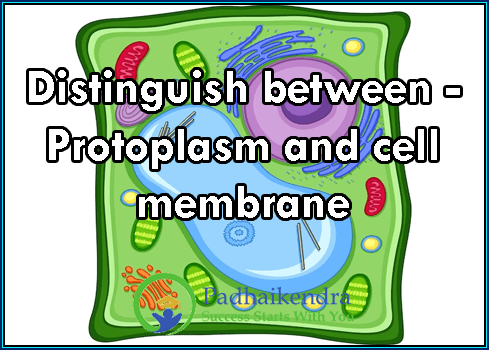Protoplasm and cell membrane are two different components of the cell, with distinct structures and functions:
- Structure: Protoplasm is the living substance of the cell, composed of the cytoplasm and the nucleus. It is a gel-like substance that fills the cell and contains various organelles, including the cell membrane. The cell membrane, on the other hand, is a thin, flexible barrier that encloses the cell and separates the cytoplasm from the external environment. It is composed of lipids, proteins, and carbohydrates.
- Composition: Protoplasm consists of water, proteins, carbohydrates, lipids, nucleic acids, and other organic and inorganic molecules, whereas the cell membrane is mainly composed of phospholipids and proteins.
- Function: Protoplasm is responsible for carrying out all the metabolic and cellular processes of the cell, including growth, reproduction, and repair. The cell membrane, on the other hand, regulates the passage of substances in and out of the cell, helps maintain the cell’s shape, and provides protection to the cell.
- Location: Protoplasm is present throughout the cell, while the cell membrane is found on the outermost layer of the cell.
In summary, protoplasm and cell membrane are both important components of the cell, but they differ in structure, composition, function, and location. Protoplasm is the living substance of the cell that carries out all cellular processes, while the cell membrane is a thin, flexible barrier that encloses the cell and regulates the passage of substances in and out of the cell.





